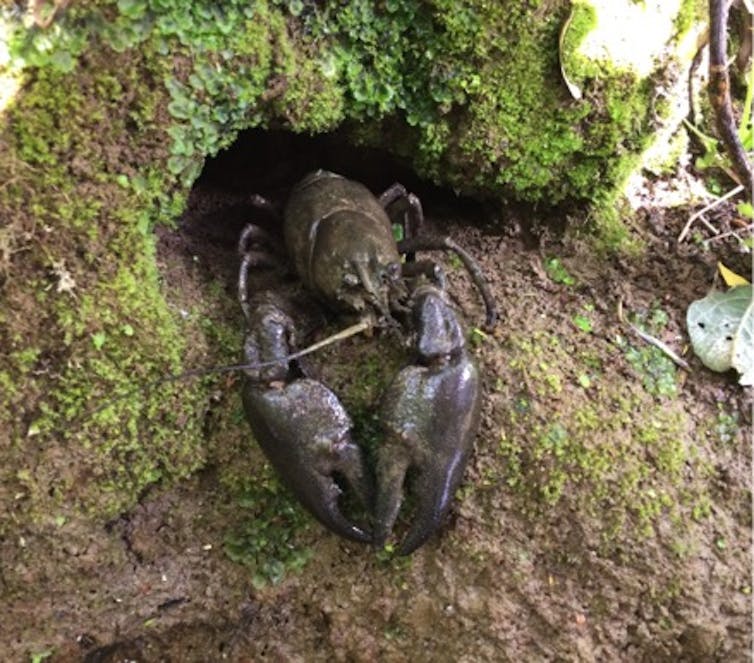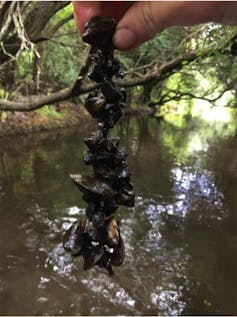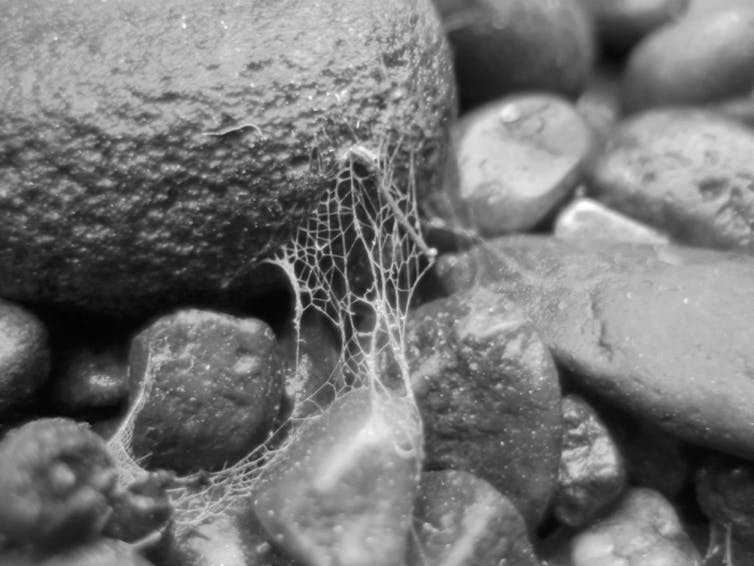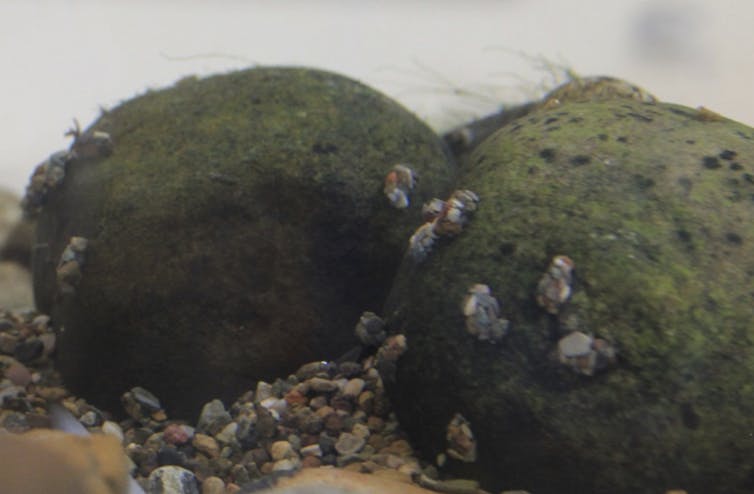What shapes a river? People typically imagine large-scale processes such as storms and floods or human modifications like dams or fortified banks. But the shape of our rivers today is also a result of the cumulative impact of millions of tiny invertebrates, often small enough that most people don’t even notice them.
“Zoogeomorphology” is the study of how animals effect their physical environment, such as by moving sediment or modifying the habitat. The zoogeomorphic effects of larger organisms are easily seen. For example, when a beaver builds a dam it retains water, creating diverse wetlands upstream and sometimes helping to reduce flooding downstream. Fish also alter the river, turning over gravels while feeding and spawning.
The individual impacts of invertebrates are much smaller but, collectively, they can make a big difference. Charles Darwin recognised this as early as 1881 in his snappy-titled “The Formation of Vegetable Mould through the Action of Worms, with Observations on their Habits”, and the same is true in rivers. This army of small engineers is changing river environments, and we are part of a research group that is working out exactly how.
Here are three small creatures we already know are having a big impact:
1) Crayfish – burrowing banks
Signal crayfish are freshwater crustaceans, similar in shape to lobsters but only about the size of an iPhone. Signal crayfish were introduced to the UK in the 1970s to be farmed for food. But after a series of escapes, the species is now widespread, with no known methods for eradication. Signal crayfish are having detrimental impacts on the ecology of rivers. They feed largely on aquatic plants and native invertebrates, consequently modifying the species of native fauna and flora present. Furthermore, via competition and spreading crayfish plague, signal crayfish are destroying populations of native white-clawed crayfish.
Signal crayfish are also dramatically changing the river environment. In the UK, they burrow into clay banks, causing bank failure, bringing down buildings and infrastructure. For example, the burrowing into earth dams at Prior Park Landscape Gardens in Bath has necessitated repairs costing millions of pounds. Crayfish burrowing also adds vast quantities of clay into the river which clogs gravel-beds and is bad news for fish who like to spawn in gravel.
2) Mussels – gluing gravels
Mussels filter the water they live in, removing sediment and organic detritus. Native freshwater mussels are keystone species, facilitating higher populations of other invertebrates. However, invasive mussels are causing problems.
Zebra mussels, originally from Russia and the Ukraine, are prolific breeders and have now spread across Europe and into the Great Lakes of the US and Canada, where they are blocking pipes and costing American water and electric companies an estimated $17.8m each year.
The zebra mussel was first found in the UK in 1825 but has seen a recent rapid expansion, and lately its larger cousin, the quagga mussel has arrived. These mussels attach themselves to river gravels, native mussels, and each other, creating a dense mesh of mussels. This effectively solidifies the river bed, reducing the quality of the habitat for other animals.
3) Caddisfly – sticking stones
Caddisflies are an incredibly diverse group of aquatic insects, with nearly 200 species in the UK alone. Their larvae produce silk, similar to spiders, except it is sticky underwater, and many species use it to construct silk nets much like spider webs. Caddisflies string these nets between stones in order to catch particles of food moving down the river.
These nets also act to tie river gravels together. This results in more stable patches of gravel, reducing erosion and possibly providing a safe refuge for other invertebrates in floods. Caddisfly larvae are smaller than a thumbnail, however they are often found in extremely high numbers with many thousands of individuals per square metre of river bed. This abundance, coupled with their extraordinary use of silk, means they can affect the geomorphology of rivers.
In addition to building nets, many species of caddisfly larvae construct “cases” to protect them from predator fish, both as larvae and when pupating (transforming into flies). To build these cases, larvae use silk to stick together everything from gravel to very fine sand and bits of plants. By transporting this sand around the river bed, tiny caddisflies may impact much larger physical processes, such as the transport of sand downstream.
Aquatic invertebrates, such as the three considered above, may be small but they can shape the landscape around them. We need to better understand these zoogeomorphic effects because without them we cannot predict how rivers will change over time, including in response to climate change.
In the case of invasive creatures such as signal crayfish and zebra mussels, it is important to prevent their spread not only to protect native species, but to prevent the invaders changing their habitat for the worse. However, native species may be key to the restoration of rivers.
![]()
Richard Mason, PhD Researcher, River Zoogeomorphology, Loughborough University y Harry Sanders, PhD Researcher, Zoogeomorphology, Loughborough University
This article was originally published in The Conversation. Read the original.








